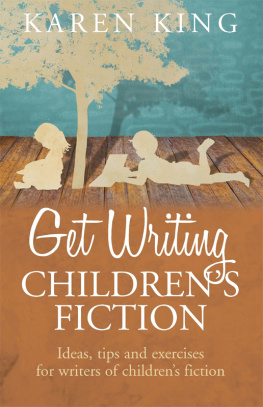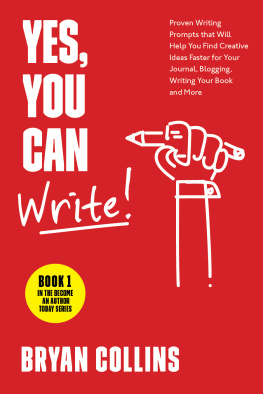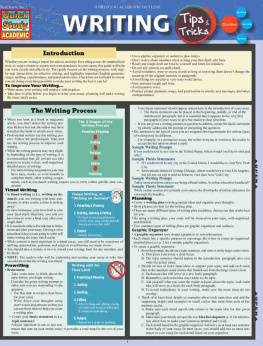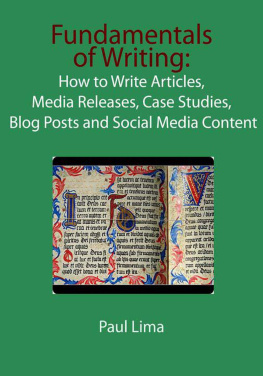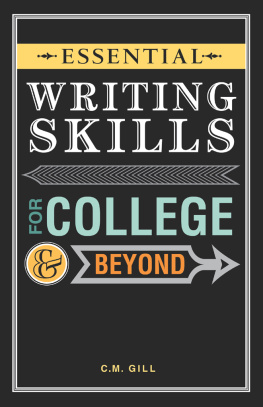Writing Tools
Unlimited Writing Ideas
4th Edition
By
Jon Griffin
2012-2014 Jon Griffin
All rights reserved.
No part of this book may be reproduced or transmitted in any form or by any means, electronic or mechanical, including photocopying, recording, or any information storage and retrieval system, without prior written permission of the Author. Your support of authors rights is appreciated. All characters in this novel are fictitious. Any resemblance to actual persons, living or dead, is purely coincidental.
Legal Stuff
2010-2012 by Jon Griffin
Notice of Rights
All rights reserved. No part of this book may be reproduced in any form by any means, electronic, mechanical, photocopying, recording, or otherwise, without written permission of the publisher. For information about getting permission reprints and excerpts, contact info@mayuli.com
Notice of Liability
The information in this report is distributed As Is, without warranty. While every precaution has been taken in the preparation of the report, neither the author or the publisher shall have any liability to any person or entity with respect to any loss or damage caused or alleged to be caused directly or indirectly by the instructions contained in this report or by the computer software and hardware products described in it.
Trademarks
Many of the designations used by manufacturers and sellers to distinguish their products are claimed as trademarks. All product names and services identified throughout this book are used in editorial fashion only and for the benefit of such companies with no intention of infringement of the trademark. No such use, or the use of any trade name, is intended to convey endorsement or other affiliation with this book.
Table of Contents
It Starts With One
Lao Tzu famously said, The journey of a thousand miles begins with a single step. So does your blog.
You may not realize it, but that first blog post sets the tone for your entire blog. You can of course, write about different subjects, completely change your blog, or even never write another post about anything related to that first post ever again, but the fact remains that your blog starts with your first post.
A famous marketing axiom says that selling to an existing customer is easier than finding a new customer. You can use this same idea for your blog. An existing post is easier to build on than creating an entirely new post.
I am not suggesting the typical, copy other posts and change some synonyms or sentences. What I am saying is that each post is like the beginning of a gold vein, you can go deeper and deeper, and then start branching off.
This short report will show you how to leverage your existing blog posts and never run out of ideas again. In fact, you could create a very tightly focused niche blog with one seed post and as you will see, just keep on writing.
This technique will work for every blog, every niche, and even every language. I use this exact method with my college students. I often have one topic I need them to write a report about, but I dont want 45 reports on the same topic.
A note about my style
Some of you may already read my blog, or subscribe to my email list. For those who dont, I will tell you a little about myself.
I teach in the Hotel College at the University of Nevada, Las Vegas, but unlike many of my academic colleagues, I have actually worked in the profession I teach (beer and brewing in this case).
I am not into long dissertations and convoluted logic. I get to the point. I know your time is valuable. I believe in making learning as short as possible and no shorter.
Questions to Ask Yourself
This is almost obligatory in most marketing reports, and to be honest, I thought about not including this section. This isnt just a mind-set section, rather it is a get it together section. Alternatively, the way I like to think of it is a strategy section.
I am a firm believer in strategy and too many business people confuse strategy with tactics. Worse yet, they dont even think about strategy. They use the firefighting method. Put out all the fires and see if you have any time left to do business.
A good sign that you are tactical and not strategic is the throw some stuff up and see what sticks business plan. I dont want you to fall into that trap.
If you are being tactical, get out of that rut. You dont have to feel bad either since most of us are tactical. It feels better. You are doing something. Sometimes I find myself in that boat as well. Just remember, doing something that leads nowhere just gets you lost!
What Do I Want To Accomplish?
Setting goals is the first step in turning the invisible into the visible. Anthony Robbins
I think that one of the first things that people forget to ask is what they are trying to achieve. Some of us call that goal setting, which it is, but it is essentially a strategic plan.
Creating a strategic plan is usually easy, but you should remain realistic. Use the strategic plan as a reminder to yourself as well as to hold you accountable. Dont just create some vague number; make a concrete goal.
You can dream here, but remember, that while it is ok to shoot for the stars, at some point you actually have to do it. Here is a sample of what your goal might be:
I will write one blog post per day of 350 words or more. My seed posts will yield at least 15 spin-off articles before I change the topic.
Notice one thing. It is concrete statement. The statement doesnt say, I will write about one blog post a day, or at least one blog post a day. It is very specific, and there is no room for guessing. It also has a measurable outcome.
Make it specific, and it is alright to have more than one goal for a project. For example, you may have a monetization goal, or a readership goal. Those are great and write them down as well, but keep them separate. They all are inter-related, but for this part, you will be more interested in what to write about as opposed to how to make money writing.
What Do I Have To Do To Achieve This
Now we enter into the tactical arena. Strategies dont tell you how to get things done, they just tell you what needs to be done. Remember when I said shoot for the stars? Now it is time to build the spaceship to get you there. Again, be specific.
Lets use our previous example of one blog post a day. For some of you that may seem like childs play, but for many of us (including me), life intervenes and you probably have other projects or even other blogs.
What you should do is write out 3 5 steps. Make sure you think about any obstacles and add them.
1. I need to find one seed article to treat as my main theme.
2. I may not be an expert on this subject matter, so I need to become an expert quickly.
3. I need to make time to write an article. No more than one hour per day.
Do I Have Enough Ideas
This is an important question. You are probably reading this report because you want more ideas for your blog posts.
Without ideas, your blog will run out of gas and you will struggle to keep the momentum going. It is ok to have only one main idea, but many times, you will need more, and as your blog grows, you will want to expand on the original idea, or even start a completely new seed post. Most blogs are general, even if they are niche specific, that doesnt mean you cant have a blog with only one, very tightly defined idea. It just isnt the norm.


